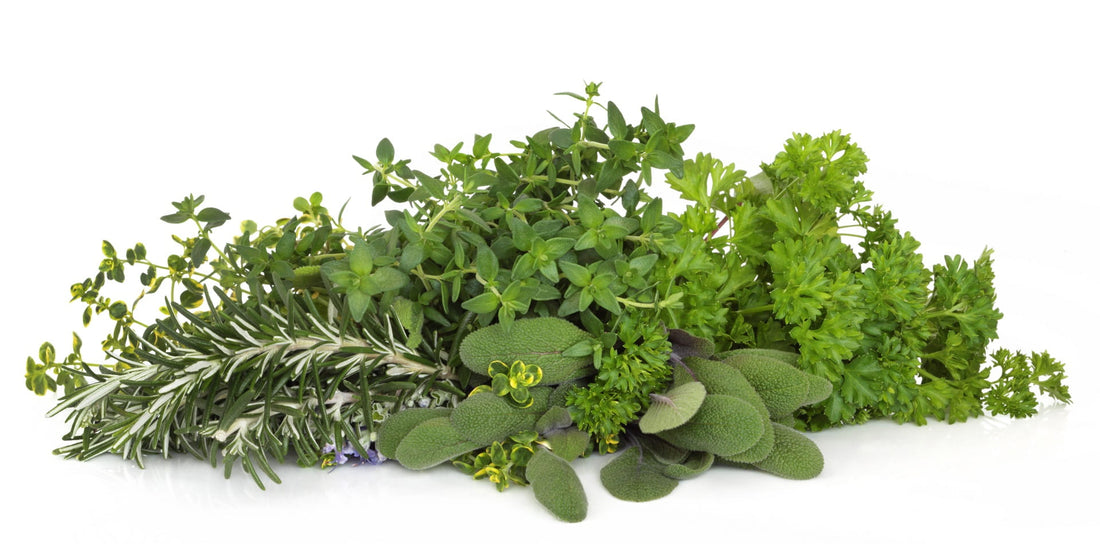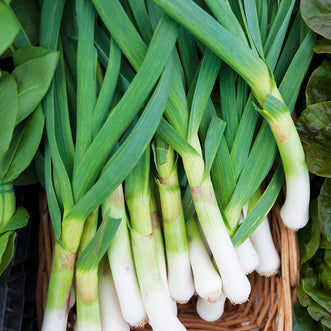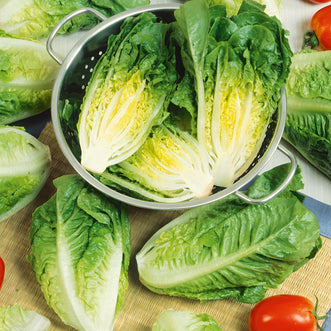
Guide to Growing and Using Parsley, Sage, Rosemary and Thyme
KarenParsley was comfort, sage was strength, rosemary was love, and thyme was courage, making these herbs relevant in the lyrics for the folk song Scarborough Fair............ the inspiration for this blog.

PARSLEY
So let's start with Parsley which has the honour of being the "International Herb of the Year 2021". No doubt it is one of the most commonly used herbs in most kitchens due to its ability to complement a large variety of foods. We have 4 different varieties of parsley, three flat leaf styles and one curly variety. The Gigante Italian is our most popular seller.
Grow in pots or in the garden in a sunny spot. To get started, it is best to germinate in a good quality seed-raising mix by sowing the seed fairly shallow and ensuring it does not get dry (spray misting is best). The seed will take 2-3 weeks to germinate in a nice warm position, so keep an eye on it and protect the new growth from slugs & snails.
Prepare the soil you wish to plant into with some compost. Once the plant is established, transplant into the garden or a bigger pot, they'll benefit from a regular liquid feed. Parsley has a vigorous root system, so make sure you give each plant some space - at least 30cm.
Sprinkle chopped parsley on baked, mashed or roasted potatoes, salads, stews and soups.
Mix into pasta, hot or cold grain dishes like couscous or quinoa, bacon & egg pie mixture or your homemade hummus and dips.
Whizz up a parsley pesto to spread on crackers, pita bread or your sandwiches.
SAGE
There are three varieties of Sage in our range all with medicinal qualities. Clary Sage and Common Sage also have culinary uses.
This perennial herb has a strong flavour, so you only need a little at a time. One plant of common sage is usually enough for average household use. Seed is easy to germinate and takes up to 3 weeks providing the soil temperature is at least 18ºC. The plants like a sunny well-drained spot in the garden and prefer less moisture so avoid frequent watering.
Sage is mostly known for being used in stuffing, but it is also a favourite when fried in a little oil, left to dry and then crumbled over meat or vegetables. It goes really well with starchy vegetables such as pumpkin, kumara or potatoes. My favourite is adding to wedges or oven baked potato chunks by chopping up a few leaves and tossing with oil, salt and pepper before baking.

ROSEMARY
You'll find Rosemary Rosy in our range which is native to the Mediterranean region. The name is derived from the latin name 'ros marinus' which means "dew of the sea". Rosemary has been dated back to 500BC, when it was used by the Romans and Greeks as an aromatic herb in cooking and medicinally for boosting memory and reducing inflammation.
Its needle like leaves are aromatic and spicy, and it has an upright growing habit to approx 1 metre. This particular variety has a high germination rate from seed and is best grown in a coarse sandy mix, keeping the soil on the slightly dry side by only watering in the morning. Growing several shrubs provide a fragrant and useful hedge-like border with lovely purple flowers. The shrubs respond well to a good pruning each year.
The leaves are best used sparingly in your cooking due to the big flavour. The branches are great used as a brush by dipping them in seasoned oil or melted butter and brushing food you're going to bbq or roast/bake and then just throw them on the top of your roast lamb, chicken or vegetables. To use the chopped leaves, strip them from the woody branch before adding to your stuffing, stews, egg dishes, tomatoes, seafood, etc. The flavour matches well with many foods.

and THYME
There are four varieties of thyme in our catalogue, all with culinary uses. Thyme English Winter is the most popular with home-gardeners and Wild Thyme is very popular with those wishing to grow a fragrant ground cover. It is also a great addition to rock gardens and growing between pavers. All the thyme varieties have small purple or white flowers that attract the bees as a good source of food.
Thyme has antiseptic qualities and was used by many cultures. The ancient Egyptians in embalming and burial rituals. The ancient Greeks as incense to give courage. The Roman emperors to stop the effects of poison by consuming it or adding it to their baths. It was also used by the Romans to purify rooms.
This is another very aromatic herb that is often used with meats, particularly in soups, stews, stuffing and sauces. It is widely used in many cuisines including European, British, Mediterranean, African, Latin and Central American, and the Caribbean.

All the herbs in this blog inspired me to create this recipe. It is a nice combination of citrus tang and herbs:
Lemon, Thyme, Parsley & Rosemary Marinade for Chicken
You will need:
Chicken - thighs (4) or legs (4-6) or boneless breasts (2)
2 Tbsp oil
3 medium lemon or limes - for zest and juice
A generous handful of each herb - rosemary, parsley, thyme - chopped
3 cloves garlic - crushed
salt & pepper
-
Mix together the juice, zest, garlic, herbs, oil and salt & pepper.
-
Pierce the chicken and place in baking dish.
-
Cover chicken with marinade rubbing the herbs into the flesh.
-
Cover and refrigerate for at least 4 hours. Overnight is suitable.
-
When ready to cook, drain the juice and drizzle with a little more oil.
-
Cook at 180ºC for 40-50 minutes or until chicken is just cooked.
-
Rest for 5 minutes before serving.
Delicious served with any salad or vegetables of your choice.



















































